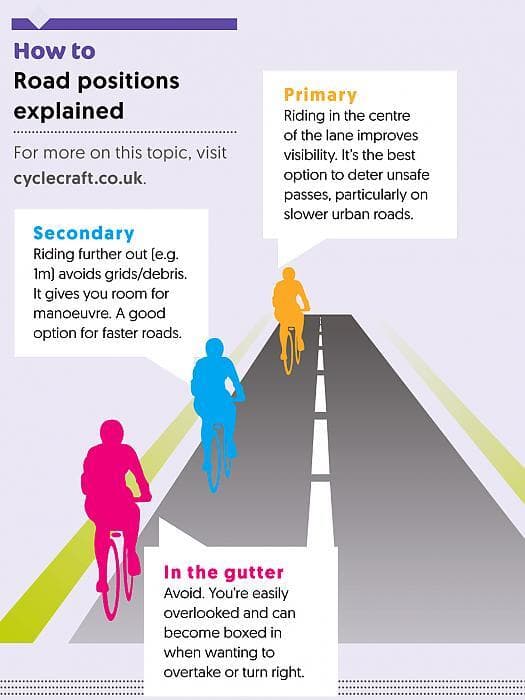
blog: Cold, dark, wet.
Friday 25th November 2022
How many times have you driven past a cyclist battling through the wind and rain in the dark and wondered what on earth has possessed them to choose such a mode of travel? In the UK, cycling rates steeply drop off once the leaves start falling, but in cities such as Joensuu in Finland, cycling still accounts for 10% of journeys, despite winter averages of -7°C. So why are Brits so afraid to get on their bikes once the nights start drawing in?
To find out some common perceptions of cycling in winter I asked 25 people their top three-word associations with cycling in winter and the results were not surprising.
Despite the group being healthy, mid-twenty-year-olds, most of whom care about the environment and don’t have much disposable income (prime candidates to encourage behaviour changes to active travel) the tone was pretty negative. Of the words surrounding the feelings created when cycling in the winter, only one of the 18 was positive.
The Weather
Based on the above it seems that the biggest issue for non-cyclists is the cold and the wet winter weather, but in colder countries this doesn’t seem to be as much of a problem. If you Google how to cycle in winter many articles tout a myriad of “essential” paraphernalia – quick-wicking base layers, waterproof shoe covers, buffs. However, in other countries with high levels of winter cyclists, the key to success seems to be that you in fact don’t need all of this.
Behaviour is so ingrained that people just wear their normal winter clothes but, on a bike. It could just be that these countries have more comprehensive wardrobes than us, but the Dutch even distinguish between wielrenners (sport cyclists) and fietser (someone on a bike), further embodying the fact that cycling shouldn’t be a big deal.
Except it feels like a big deal. Cycling in the UK in the dark, when some parents on the school run who can’t bear to get their four-wheel drive cars dirty are forcing you into gutters covered with wet leaves/puddles/slushy grey dirty ice, feels dangerous, and slippery and just plain hard. Sure, its nice to smugly zoom past a traffic jam of cars, or not have to wait around for a bus that doesn’t turn up but is the control in journey time worth the effort?
The Danger
On my commute this year I have rarely felt especially safe and I’m a reasonably confident cyclist. Being knocked off my bike last November by a car driver who thought they had time to overtake me and then turn immediately left did nothing to help increase this confidence. This week alone I’ve had two drivers pull out on me at junctions, a bus overtake me and then immediately pull into a stop ahead and pedestrians cross the road blindly in front of me, none of which make for a particularly calm frame of mind for the work day. This isn’t winter cycling specific but the increased impatient mood of the public, lower visibility and slower stopping times mean that you do feel more vulnerable.
In the UK it seems that the standard advice given is victim blaming - cyclists should make themselves more visible, rather than the impetus being on the car driver to be looking out first and foremost. That the cyclists are the problem is only reinforced through legislative policies.

The latest advice on winter road safety by Police Scotland advises cyclists and pedestrians to wear reflective/light clothes, be aware of the effects of poor weather on other road users and reminds us that car stopping distances double in the rain. Car drivers receive no advice to be on higher alert for other road users. This contrasts nicely with Sweden, for example, where bike lanes (and pavements) are cleared of snow and ice before roads, a massive difference in approach and public perception than in the UK.
There is also the issue of where to cycle: routinely less confident cyclists are forced into the side of the road because if you cycle in the primary position in the middle of the lane like the Highway Code suggests then you’re seen as a massive nuisance, leaving you to battle with puddles, gutters and potholes.
To compare these perceptions I also asked 16 people whom I know to have a keen interest in cycling (mostly members of local cycling groups Women in Tandem and MTB Outlaws) and whilst the tone is still decidedly underwhelming the overall attitude is much more positive.
When asked where they mainly cycle it’s largely off-road, often in group rides where there’s a sense of morale, or training for a race. It seems safer routes and a sense of accountability and ultimate enjoyment are the bigger influences in getting out for a ride.
For me, the reason I cycle into work is that it’s the quickest and cheapest way to get to the office, that requires no real planning. That said, on days when I can’t work from home, the temptation to drive in is minimised thanks to Nottingham being such a climate-conscious city. As it is, I grit my teeth, put my raincoat on, and ultimately, appreciate this fantastic method of travel.
It would appear that the best way to encourage a change in attitude for commuting would be to build segregated cycling lanes. Even though the UK doesn't have inherently worse weather than other cycling nations, it does have a lack of sufficient cycling infrastructure, a natural bias to support the car industry and a population with huge regional inequalities of increasingly poor health and this breeds a culture of disillusionment with active travel. If you add to this an increase in unpredictable weather created by climate change then there is strong disillusionment with active travel on an individual level.
The potential for changing behaviours in the UK away from a nation of car drivers is great if the barriers are understood and people are helped to overcome them. If you want to illicit change and find out how ITP can help you develop an active travel campaign, get in touch, we'd love to help.
